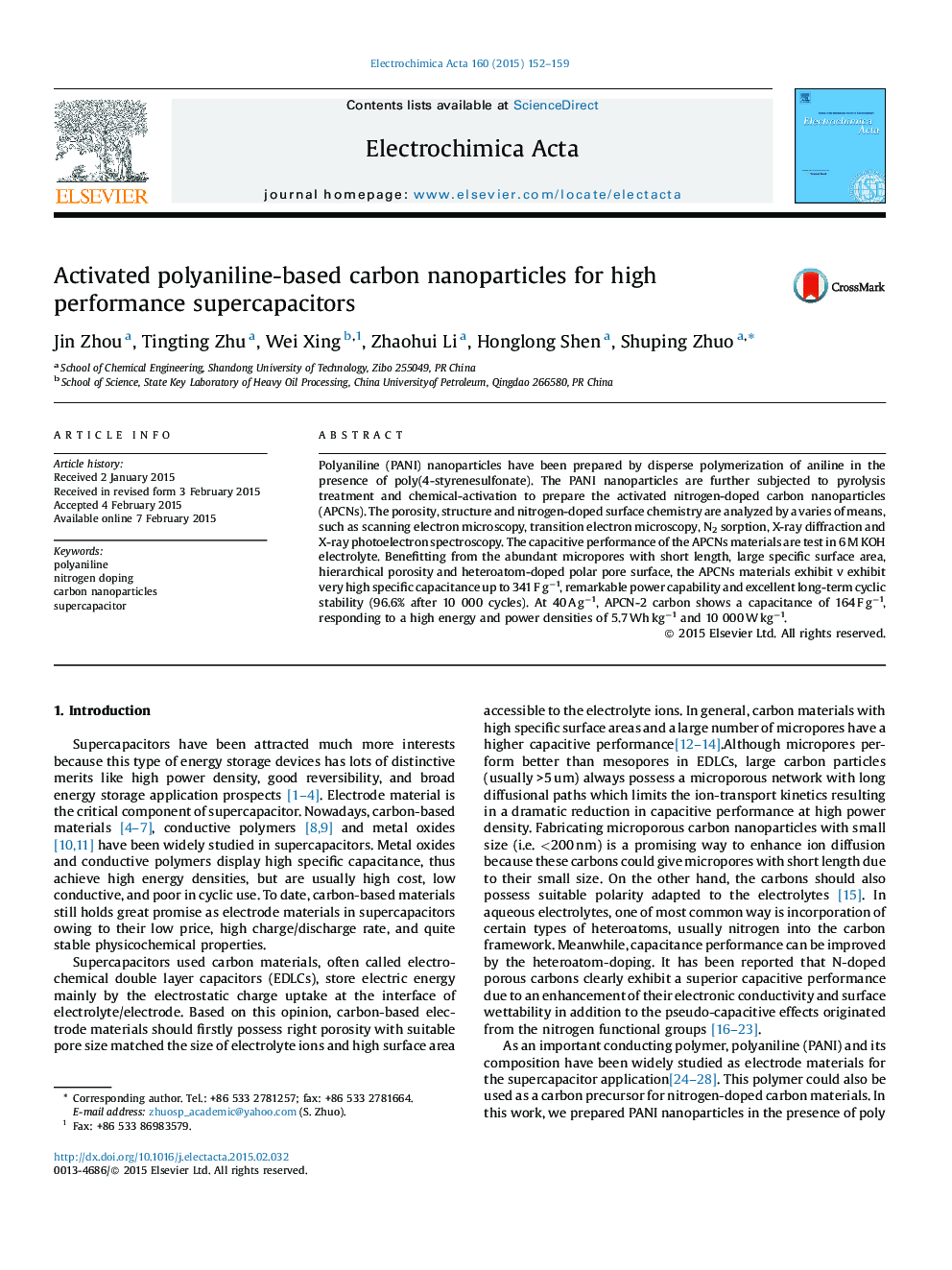| Article ID | Journal | Published Year | Pages | File Type |
|---|---|---|---|---|
| 184400 | Electrochimica Acta | 2015 | 8 Pages |
Polyaniline (PANI) nanoparticles have been prepared by disperse polymerization of aniline in the presence of poly(4-styrenesulfonate). The PANI nanoparticles are further subjected to pyrolysis treatment and chemical-activation to prepare the activated nitrogen-doped carbon nanoparticles (APCNs). The porosity, structure and nitrogen-doped surface chemistry are analyzed by a varies of means, such as scanning electron microscopy, transition electron microscopy, N2 sorption, X-ray diffraction and X-ray photoelectron spectroscopy. The capacitive performance of the APCNs materials are test in 6 M KOH electrolyte. Benefitting from the abundant micropores with short length, large specific surface area, hierarchical porosity and heteroatom-doped polar pore surface, the APCNs materials exhibit v exhibit very high specific capacitance up to 341 F g−1, remarkable power capability and excellent long-term cyclic stability (96.6% after 10 000 cycles). At 40 A g−1, APCN-2 carbon shows a capacitance of 164 F g−1, responding to a high energy and power densities of 5.7 Wh kg−1 and 10 000 W kg−1.
Graphical abstractFigure optionsDownload full-size imageDownload as PowerPoint slide
